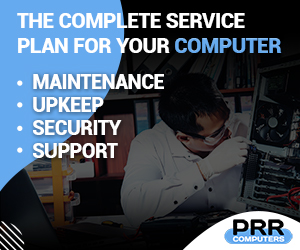Any student needs to think about a laptop to write papers and search for information on the Internet. Such a device is better than a PC since you will work even without being connected to the mains for a while. In addition, you can go to the library, park or friends and all your data will be with you. But which laptop should you choose? There are many important factors that you should pay attention to.
Decide on Your Budget
As a rule, the main criterion for choosing a laptop is the price. If you’re on a tight budget, then you can look at devices under $400. The middle price segment can raise the bar to $800-$1000. If your budget is not limited, then you can take any laptop more expensive than $1500. The price category directly affects the quality of all components and overall performance. Think about the amount you are willing to pay, keeping in mind that generally speaking, the price of a laptop is often directly proportional to the performance (speed) you should expect it to provide.
Choose the Operating System
Modern laptops can be Windows, Mac OS, or Linux OS. Pay attention to those applications that you will use during your education. There are quite a few graphics editors, engineering projects, and math applications that are only available on Windows or Mac OS. In addition, you should try out both operating systems to see which one is most comfortable for you.
If the range of your tasks concerns Internet browsing, watching videos, and working with tables, then the choice depends only on your user experience. There are no clear rules that would govern the choice of OS. Just tell the store manager, “I want to see all the devices here and there. What laptops do you have in stock? “
Select the Processor and Ram
This is the most important part of your choice. The point is that you need at least 8 GB of RAM. The fact is that Windows and Mac OS can use up to 2 GB of RAM. If your browser is Google Chrome, then get ready because this application will take another 1.5-2 GB. What if you will be using AutoCAD or video editing applications? If your budget is not too tight, then you should get 16 GB of RAM. This amount will be enough for games and comfortable work with applications in the next 3-5 years.
Choosing a processor is a more difficult aspect. First, you should forget about dual-core CPUs. Pay attention to Intel Core I3, I5, or I7. Look for U processors if battery life is important to you. These components consume the least energy. The Y index also means low power consumption, but you can count on more performance.
The K index signals an unlocked multiplier. This means that you can use the turbo boost for more productive tasks. For a budget laptop, I3 or I5 will suffice. By the way, you can pay attention to AMD processors. Ryzen 3,5, and 7 are direct counterparts to the I3, I5, and I7. Performance tests indicate the relative parity of processors, depending on the types of tasks being performed.
Figure Out How Much Storage You Need
First, you should pay attention to SSD drives. Forget about the HDD, as the operating system boot time will be critically long, and the operating speed is unsatisfactory. M.2 NVMe drives are the fastest. If you plan to use text editors and watch content online, then 256 GB is enough for you.
But what if you plan on storing photos, music, or movies? Do not worry. Everything is extremely simple. Imagine a dummies’ guide how write to critical analysis essay. The first tip is to define your main goal. Choosing an SSD follows the same principles. If you have a small archive of data, then 512 GB is enough for you. If you plan to install at least 3-4 video games or professional applications, you will need 1 TB.
Choose the Graphics Card
If you do not need games or complex math calculations, you can buy a laptop with integrated graphics. Radeon RX Vega or Intel UHD Graphics 630 will be enough for most everyday tasks. By the way, Vega allows you to play many games at low settings quite comfortably. If you aim for more productive tasks, you should take a look at Nvidia GeForce or Radeon RX graphics cards.
You will need at least 4GB of VRAM for games at medium-high settings. It is best if you choose a video card with 6 or even 8 GB. Then, you can adjust ultra-textures and more objects on the screen. Plus, the large amount of video memory allows you to perform complex mathematical calculations.
Choose Battery
Look for laptops with a battery capacity of 50-70 Wh or more. How many hours you can work offline depends on this. Typically, most modern laptops can last at least four hours under moderate load. Fortunately, this parameter is not very critical since you will have the opportunity to charge your laptop in college or use a power bank.
Choose the One That Is Portable If you want to have a compact device, you should pay attention to the models with 13 and 14-inch displays. This is a great option that you can hold in one hand without discomfort. But if you want to work comfortably with texts, then 15.6 or 17 inches will be preferable.
Alternative: Turbo Charge an Older Laptop
Do you have an existing laptop? It is very often possible to upgrade it to behave like a modern / new laptop – typically for about half the cost of a nicer new laptop. Check out our Turbo Charge service here.





